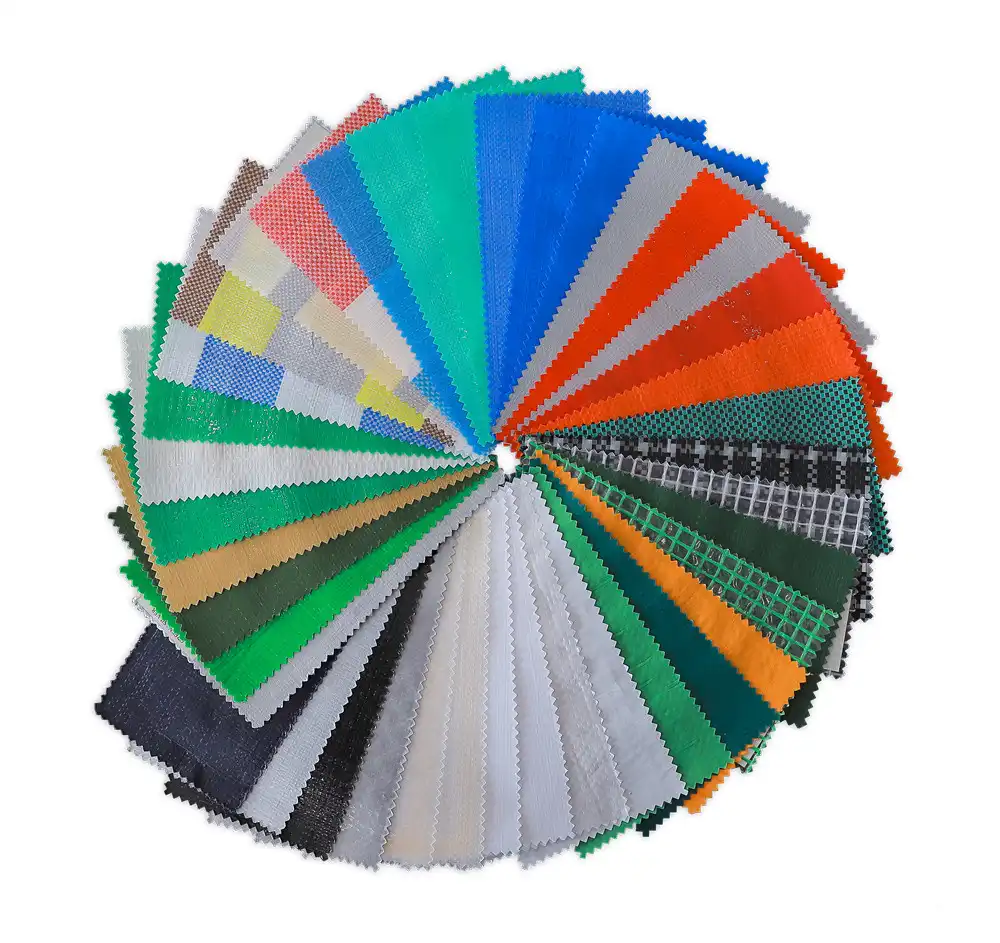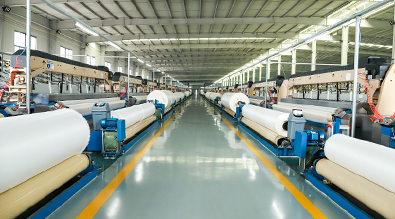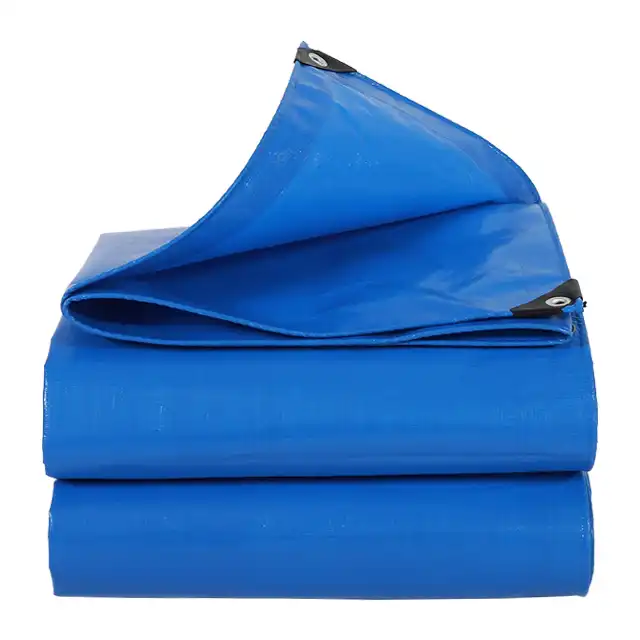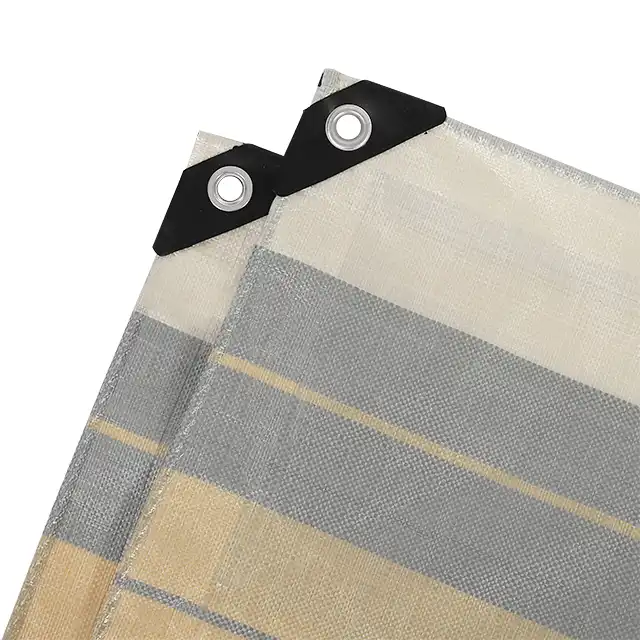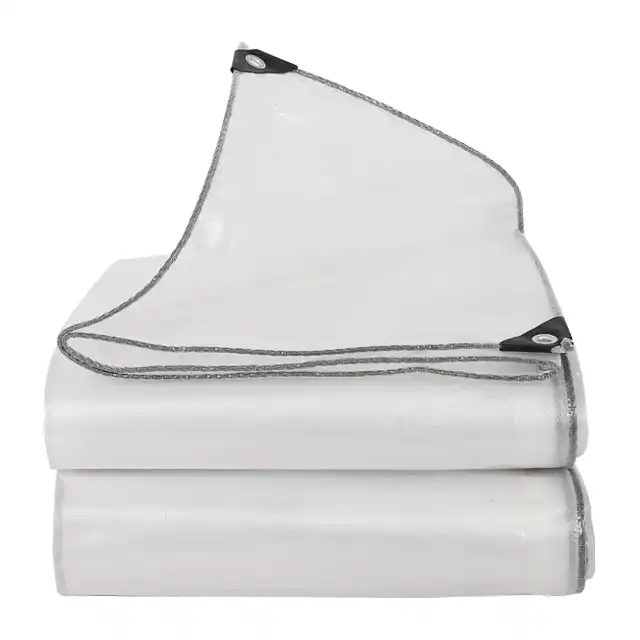Industrial Grade Tarpaulin vs Household Tarpaulin: Which Should You Buy
Picture this scenario: your construction project demands reliable protection against harsh weather conditions, but your budget-friendly household tarp fails after just two weeks, leaving your expensive equipment exposed and damaged. This common dilemma highlights the critical importance of choosing between industrial tarpaulin and household options. The difference between these two categories extends far beyond price point, encompassing durability, material composition, performance specifications, and long-term value proposition. Understanding these distinctions is essential for making informed purchasing decisions that align with your specific coverage requirements, environmental conditions, and budget constraints while ensuring optimal protection for your valuable assets.
Understanding Industrial Tarpaulin Construction and Applications
 Industrial tarpaulin represents the pinnacle of heavy-duty protective covering solutions, engineered specifically to withstand extreme environmental conditions and demanding operational requirements. These high-performance covers are constructed using superior materials and advanced manufacturing processes that deliver exceptional durability, tear resistance, and weather protection. The foundation of industrial tarpaulin lies in its sophisticated material composition, typically featuring high-density polyethylene (HDPE) woven fabric combined with low-density polyethylene (LDPE) coating layers that create a robust barrier against moisture, UV radiation, and physical damage. The manufacturing process of industrial tarpaulin involves precise engineering standards that ensure consistent quality and performance characteristics. These tarps utilize high-strength yarn ranging from 400D to 2500D denier, providing exceptional tensile strength and tear resistance that can withstand significant mechanical stress and environmental pressure. The weaving process employs advanced water-jet looms with mesh counts typically ranging from 10x10 to 14x14, creating a tight, uniform fabric structure that enhances overall durability and weather resistance properties.
Industrial tarpaulin represents the pinnacle of heavy-duty protective covering solutions, engineered specifically to withstand extreme environmental conditions and demanding operational requirements. These high-performance covers are constructed using superior materials and advanced manufacturing processes that deliver exceptional durability, tear resistance, and weather protection. The foundation of industrial tarpaulin lies in its sophisticated material composition, typically featuring high-density polyethylene (HDPE) woven fabric combined with low-density polyethylene (LDPE) coating layers that create a robust barrier against moisture, UV radiation, and physical damage. The manufacturing process of industrial tarpaulin involves precise engineering standards that ensure consistent quality and performance characteristics. These tarps utilize high-strength yarn ranging from 400D to 2500D denier, providing exceptional tensile strength and tear resistance that can withstand significant mechanical stress and environmental pressure. The weaving process employs advanced water-jet looms with mesh counts typically ranging from 10x10 to 14x14, creating a tight, uniform fabric structure that enhances overall durability and weather resistance properties.
-
Material Specifications and Performance Features
Industrial tarpaulin construction incorporates multiple protective layers that work synergistically to provide comprehensive coverage solutions. The HDPE woven fabric base provides structural integrity and dimensional stability, while the LDPE coating layers offer waterproof protection and chemical resistance. These materials are specifically selected for their ability to maintain flexibility in extreme temperatures while providing superior resistance to UV degradation, chemical exposure, and physical wear. The thickness specifications for industrial tarpaulin typically range from 7 to 12 mils, with weight specifications spanning from 100gsm to 280gsm depending on the intended application requirements. UV treatment levels generally range from 1% to 7%, providing enhanced protection against solar radiation that can cause material degradation and color fading over extended exposure periods. This comprehensive UV protection ensures that industrial tarpaulin maintains its structural integrity and protective properties even under continuous outdoor exposure conditions.
Household Tarpaulin Characteristics and Limitations
Household tarpaulin products are designed primarily for light-duty applications and temporary coverage needs, offering an economical solution for basic protection requirements. These tarps typically feature simplified construction methods and materials that prioritize cost-effectiveness over long-term durability and performance. While household tarps serve their intended purpose for short-term use and moderate environmental conditions, they possess inherent limitations that make them unsuitable for demanding industrial applications or extended outdoor exposure. The material composition of household tarpaulin generally consists of lower-grade polyethylene materials with reduced thickness and simplified coating processes. These tarps typically feature lighter weight specifications, often ranging from 65gsm to 150gsm, which results in reduced tear resistance and overall durability compared to industrial-grade alternatives. The weaving density and yarn strength are also significantly lower, making household tarps more susceptible to damage from wind, punctures, and UV exposure.
-
Performance Limitations in Demanding Environments
Household tarpaulin products demonstrate notable performance limitations when subjected to challenging environmental conditions or heavy-duty applications. The reduced material thickness and simplified construction methods result in decreased resistance to tearing, puncturing, and general wear that can compromise protective effectiveness. UV resistance is typically minimal or absent entirely, leading to rapid material degradation, color fading, and reduced waterproof capabilities when exposed to continuous sunlight. The waterproof properties of household tarps, while adequate for light rain and temporary moisture protection, may prove insufficient for prolonged exposure to heavy precipitation or standing water conditions. The simplified seaming and edge reinforcement techniques used in household tarp manufacturing can create weak points that are prone to failure under stress, potentially resulting in complete coverage compromise and property damage.
Industrial Tarpaulin Applications and Use Cases
Industrial tarpaulin serves a diverse range of demanding applications across multiple industries and sectors, demonstrating exceptional versatility and performance reliability. Construction and building sites represent primary applications where industrial tarpaulin provides critical protection for materials, equipment, and work areas against weather exposure, debris, and environmental contamination. These tarps must withstand constant handling, wind stress, and exposure to construction chemicals while maintaining their protective integrity throughout extended project durations. Agricultural applications utilize industrial tarpaulin for crop protection, equipment covering, and livestock shelter construction, where durability and weather resistance are paramount for operational success. The ability to withstand continuous outdoor exposure, seasonal temperature variations, and agricultural chemical contact makes industrial tarpaulin indispensable for farming operations. Additionally, these tarps provide essential protection for harvested crops, machinery storage, and temporary shelter construction in rural environments.
-
Transportation and Logistics Applications
Transportation industry applications require industrial tarpaulin that can withstand highway speeds, weather exposure, and frequent handling while protecting valuable cargo during transit. Truck covers and trailer tarps must provide secure, weatherproof protection while maintaining flexibility for loading and unloading operations. The superior tear resistance and reinforced construction of industrial tarpaulin ensures cargo protection even under challenging transportation conditions and repeated use cycles. Marine and aquaculture applications demand industrial tarpaulin with enhanced chemical resistance and waterproof properties for fish pond linings, boat covers, and marine equipment protection. These specialized applications require materials that can withstand constant water exposure, salt spray, and marine environmental conditions while maintaining structural integrity and protective effectiveness over extended periods.
Cost Analysis and Long-term Value Considerations
The initial investment in industrial tarpaulin significantly exceeds household alternatives, with prices typically ranging from 200% to 500% higher depending on specifications and application requirements. However, comprehensive cost analysis reveals that industrial tarpaulin often provides superior long-term value through extended service life, reduced replacement frequency, and enhanced protection capabilities that prevent costly damage to covered assets. The total cost of ownership calculation must consider replacement costs, downtime expenses, and potential damage costs associated with inadequate protection. Industrial tarpaulin typically demonstrates service life spans of 3-7 years under normal operating conditions, compared to 6-18 months for household alternatives. This extended durability translates to reduced replacement frequency and lower long-term material costs. Additionally, the superior protection capabilities of industrial tarpaulin can prevent expensive damage to covered equipment, materials, or structures that might occur with inadequate household tarp protection.
-
Return on Investment Analysis
The return on investment for industrial tarpaulin becomes evident when considering the potential costs associated with inadequate protection. Construction equipment damage from weather exposure can result in repair costs ranging from hundreds to thousands of dollars, far exceeding the price difference between industrial and household tarps. Similarly, agricultural crop losses due to inadequate protection can represent significant financial impacts that justify the initial investment in superior coverage solutions. Operational efficiency considerations also contribute to long-term value propositions, as industrial tarpaulin requires less frequent replacement and maintenance compared to household alternatives. This reduced maintenance requirement translates to lower labor costs and reduced operational disruptions, further enhancing the overall value proposition of industrial-grade protection solutions.
Conclusion
The decision between industrial tarpaulin and household alternatives ultimately depends on your specific application requirements, environmental conditions, and long-term protection needs. Industrial tarpaulin represents the optimal choice for demanding applications requiring superior durability, weather resistance, and extended service life, while household tarps serve adequately for temporary, light-duty coverage needs. Consider the total cost of ownership, including replacement frequency and potential damage costs, when making your selection decision.
Cooperate with Linyi Shengde Plastic Co., Ltd.
As a leading China Industrial Tarpaulin manufacturer established in 2003, Linyi Shengde Plastic Co., Ltd. combines over 20 years of expertise with state-of-the-art manufacturing capabilities to deliver premium PE tarpaulin solutions. Our partnerships with UNHCR, IOM, ICRC, and UNICEF demonstrate our commitment to quality and reliability. With 600+ skilled workers, advanced production lines capable of 100+ tons daily output, and ISO 9001:2015 certification, we ensure consistent High Quality Industrial Tarpaulin products. As your trusted China Industrial Tarpaulin supplier and China Industrial Tarpaulin wholesale partner, we offer competitive Industrial Tarpaulin price options and comprehensive Industrial Tarpaulin for sale solutions. Contact us at info@shengdetarp.com for customized solutions that meet your exact specifications and experience the difference that professional-grade protection delivers for your valuable assets.
FAQ
Q: What is the main difference between industrial and household tarpaulin durability?
A: Industrial tarpaulin features 3-7 times longer service life with superior tear resistance, while household tarps typically last 6-18 months under normal conditions.
Q: Can household tarpaulin withstand severe weather conditions?
A: Household tarps provide basic weather protection but may fail under extreme conditions like high winds, heavy snow loads, or prolonged UV exposure that industrial tarps easily handle.
Q: Is the higher cost of industrial tarpaulin justified for temporary use?
A: For short-term applications under moderate conditions, household tarps may suffice, but industrial tarps prove cost-effective when considering potential damage prevention and replacement frequency.
Q: What weight specifications should I consider for industrial applications?
A: Industrial applications typically require 100-280gsm weight specifications with 7-12 mil thickness, compared to 65-150gsm for household use, depending on environmental conditions and protection requirements.
References
1. "Polyethylene Tarpaulin Manufacturing Standards and Quality Control" - Industrial Textiles Research Institute, Dr. Michael Chen, 2023
2. "Comparative Analysis of Tarpaulin Materials in Construction Applications" - Construction Materials Journal, Prof. Sarah Williams, 2024
3. "UV Degradation and Weather Resistance in Polymer-Based Protective Covers" - Materials Science Quarterly, Dr. James Thompson, 2023
4. "Cost-Benefit Analysis of Industrial vs. Consumer-Grade Protective Coverings" - Industrial Economics Review, Dr. Lisa Anderson, 2024
